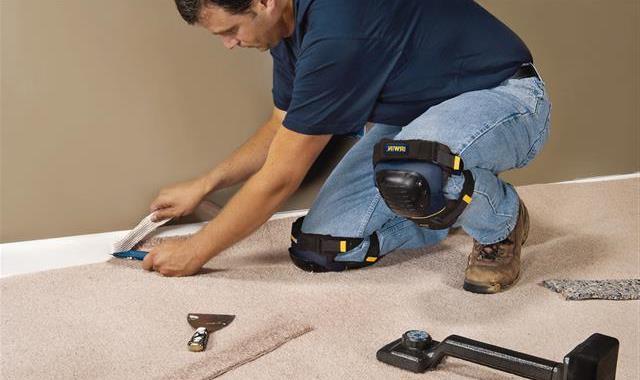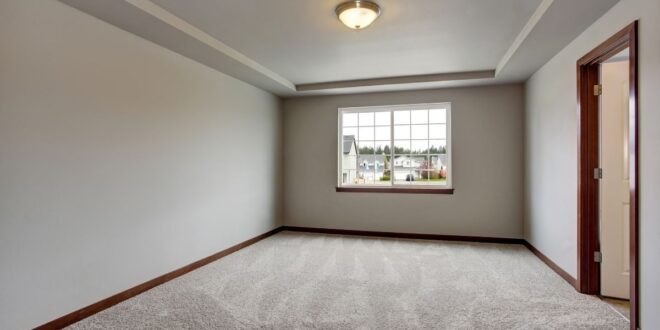The time it takes to install carpet can vary depending on several factors, including the size of the area, the complexity of the job, the type of carpet being installed, and the skill level of the installer. However, as a general guideline, here’s an estimate for different scenarios:
How long does it take to install carpet?
- Small Room: For a small room, such as a bedroom or home office, carpet installation can typically be completed in a few hours, often within a half-day.
- Average-Sized Room: A standard-sized living room or dining room might take a professional installer or a skilled DIYer a half-day to a full day for carpet installation.
- Multiple Rooms: If you’re carpeting multiple rooms or a larger space, it could take a day or more, depending on the size and complexity of the area.
- Stairs: Installing carpet on stairs can be more time-consuming and challenging, so it might take several hours to a full day, depending on the number of steps and the intricacy of the design.
- Complex Layouts or Patterns: If your installation involves complex patterns or requires a lot of cutting and fitting, it can add significantly to the installation time.
- Removal of Old Carpet: If you’re removing old carpet before installing the new one, this will also add time to the process. Removing old carpet and preparing the subfloor can take a few hours to a day or more, depending on the condition of the existing floor.
It’s essential to hire a professional installer if you’re not experienced in carpet installation, as they have the skills and tools necessary to complete the job efficiently. They can also provide a more accurate time estimate based on your specific project. Keep in mind that these are general estimates, and the actual time may vary depending on the circumstances.

Step-by-Step Carpet Installation
Installing carpet is a great way to enhance the comfort and aesthetics of your home. Whether you’re updating a single room or giving your entire space a makeover, understanding the carpet installation process is essential. In this guide, we’ll take you through the step-by-step process of installing carpet, from the initial assessment to the finishing touches.
1. Initial Assessment and Preparation
Before you begin, assess the area where you intend to install the carpet. This involves measuring the room, checking the condition of the subfloor, and ensuring it’s clean and dry.
2. Choosing the Right Carpet
Select the perfect carpet for your space. Consider factors like material, color, texture, and pile height. Your choice should complement the room’s style and meet your functional needs.
3. Removing Old Carpet (if necessary)
If there’s existing carpet in the room, it needs to be removed. This step involves pulling up the old carpet, removing the padding, and any adhesive or tack strips. Be prepared for some extra time if you need to remove old carpet.
4. Preparing the Subfloor
The subfloor must be smooth and level. Patch any imperfections, such as cracks or dips, and ensure the surface is clean and free from debris. A well-prepared subfloor is essential for a successful installation.
5. Installing Carpet Padding
Carpet padding, also known as underlay or cushion, is laid over the subfloor to provide comfort and support for the carpet. Roll out the padding and cut it to fit the room’s dimensions.
6. Cutting and Fitting the Carpet
Unroll the carpet and cut it to the appropriate size for the room. If you’re working with patterned carpet, pay attention to matching patterns for a seamless look.
7. Carpet Installation
Now, it’s time to install the carpet. Stretch it and lay it over the padding. Secure the edges using tack strips along the room’s perimeter. Installers use tools like a knee kicker and a power stretcher to ensure the carpet is smooth and tightly stretched.
8. Seaming (if necessary)
In larger rooms, seams may be necessary where two pieces of carpet meet. Proper seaming techniques are crucial to ensure an inconspicuous seam.
9. Trimming and Finishing
Trim any excess carpet and make necessary adjustments around obstacles like doorways. Installers will also tuck the carpet edges under baseboards for a clean finish.
10. Final Inspection
The installation team performs a final inspection to check for any imperfections or issues. They ensure that the carpet is securely in place and properly stretched.
The time required for each of these steps can vary based on the size and complexity of the project, the skill level of the installers, and the type of carpet being used. A small room might be completed in just a few hours, while larger and more complex installations may take a day or more.
In conclusion, understanding the process of carpet installation is crucial for a successful home improvement project. If you’re not experienced in carpet installation, it’s advisable to hire a professional installer to ensure the job is done efficiently and correctly. A well-installed carpet can transform your space, providing both comfort and style for years to come.
 Carpet Guides All About Carpet Installing
Carpet Guides All About Carpet Installing 
